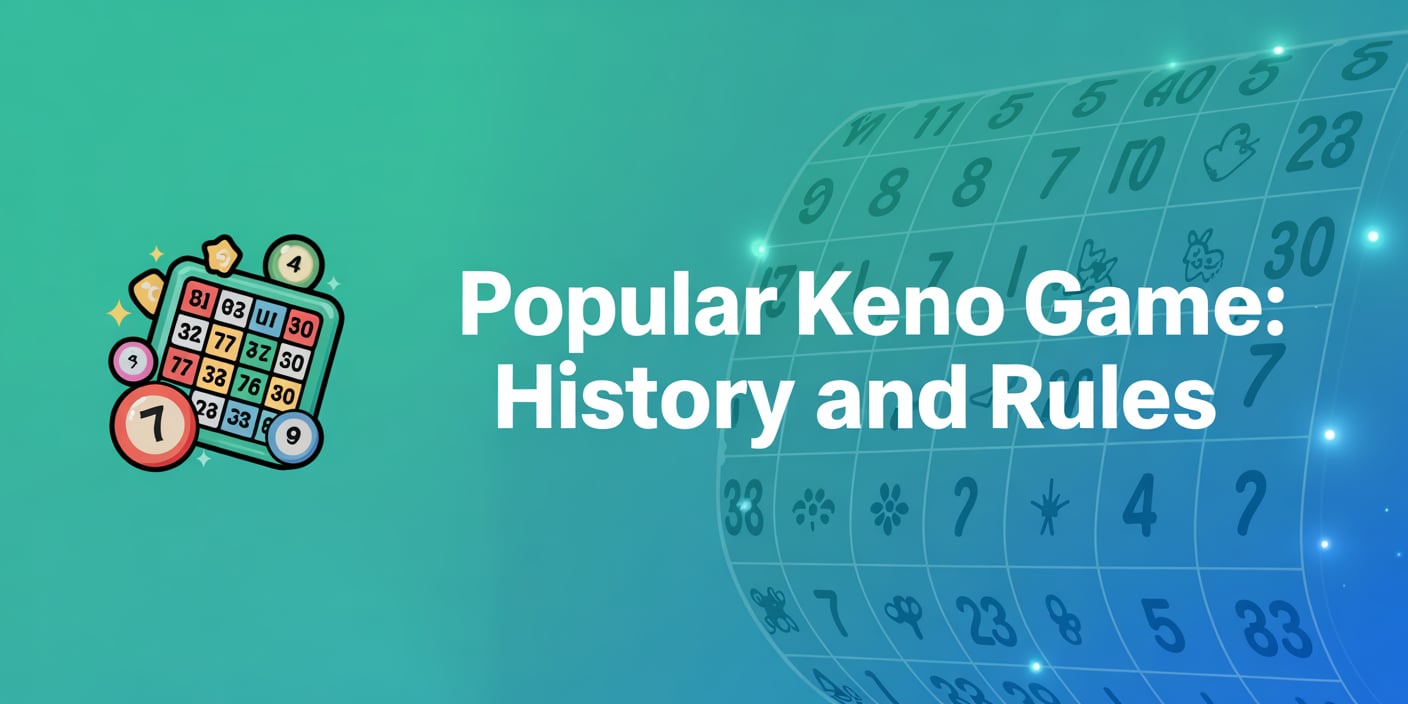Popular Keno Game: History and Rules

The popular lottery game Keno has a long history – it was used by the rulers of Ancient China to improve the state treasury. Legends say that the funds generated from Keno were used to build the Great Wall. Over the years, the game’s fame spread to other countries. The algorithms for the gameplay evolved and improved, becoming the foundation for the creation of modern domestic and international lotteries regulated by the state.
Today, the game is especially popular, with online versions available. The most common version is the classic 20 out of 80 Keno game with traditional rules familiar to most players. To play keno online, there's no need to travel around the city looking for tickets — simply start the game on a website.
Keno – Game Rules
The virtual version features a game field divided into numbered cells from 1 to 80. Nearby, there is a basket with 80 balls, each labeled with the same numbers. During a round, 20 balls are drawn from the basket. Players must predict the numbers before the round starts.
Keno can also be played in training mode. In this version, players:
-
Gain experience,
-
Improve their skills,
-
Develop strategies.
However, winnings cannot be withdrawn in this mode, so most players prefer to switch to the main mode. In this mode, players place bets and fill out their lottery ticket. In the online version, the ball numbers are determined by a random number generator system.
The number of bets must match the number of balls the player wishes to guess. Online platforms offer different limits, such as 15 or 20 numbers. After the round starts, the basket’s contents are mixed, and the balls are drawn sequentially through a transparent tube. The drawn balls are lined up and visible to the players. Players then compare the drawn numbers with those on their tickets. The prize size depends on the amount bet and the number of correct guesses. A player only needs to guess one number to receive a prize.
Keno Strategies
Players often wonder how to predict the drawn numbers in advance. Experts recommend regularly watching the lottery broadcasts and tracking the statistics of previous rounds. Some players rely on probability theory. If certain numbers appeared in the previous round, it's unlikely they will appear in the next one. Conversely, if numbers haven’t appeared for a while, there is a chance they will show up in the current game.
Every player wants to win, so many try to calculate their chances of success, attempting to predict the lucky numbers. A well-known mathematician, Alan Krigman, who became interested in lotteries, conducted studies and developed an effective strategy for successful gameplay. According to his theory, the chance of winning depends on the number of chosen digits. One cell gives a 25% chance, two cells give a 38% chance of one of them being a winning number. There is a 6% chance that both numbers will win. Three chosen numbers offer a 43.1% chance of one being the winning number, 13.9% for two, and 1.4% for all three.
To win, it’s important to choose numbers based on intuition, as the lottery algorithm is based on luck. The online game version is fair and secure.
How to Claim Winnings
Online platforms offer a wide range of payment methods for depositing funds and withdrawing winnings. Players can use bank cards and electronic wallets. The only condition is that winnings can only be withdrawn if the player has made bets in real currency. Users can top up their account at the gambling platform using payment systems.
Payment Methods
-
Visa: Known for high security, users can easily deposit funds.
-
Mastercard: Secure for transactions; transactions are processed quickly.
-
YooMoney: Widely used, offers fast transaction processing and secure payments at the gaming club.
-
Qiwi: Licensed payment system, quick transactions, and partnerships with VISA.
-
WebMoney: Fast deposits; doesn't require personal details from players, allowing withdrawals and deposits in the gambling platform.
